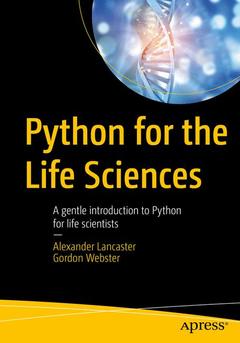Description
Python for the Life Sciences, 1st ed.
A Gentle Introduction to Python for Life Scientists
Authors: Lancaster Alexander, Webster Gordon
Language: English
Subjects for Python for the Life Sciences:
58.01 €
In Print (Delivery period: 15 days).
Add to cart376 p. · 17.8x25.4 cm · Paperback
Description
/li>Contents
/li>Biography
/li>Comment
/li>
Treat yourself to a lively, intuitive, and easy-to-follow introduction to computer programming in Python. The book was written specifically for biologists with little or no prior experience of writing code - with the goal of giving them not only a foundation in Python programming, but also the confidence and inspiration to start using Python in their own research.
Virtually all of the examples in the book are drawn from across a wide spectrum of life science research, from simple biochemical calculations and sequence analysis, to modeling the dynamic interactions of genes and proteins in cells, or the drift of genes in an evolving population.
Best of all, Python for the Life Sciences shows you how to implement all of these projects in Python, one of the most popular programming languages for scientific computing.If you are a life scientist interested in learning Python to jump-start your research, this is the book for you.
Use object-oriented programming with Python
Study mining interaction network data for patterns
Review dynamic modeling of biochemical switches
Who This Book Is For
Life scientists with little or no programming experience, including undergraduate and graduate students, postdoctoral researchers in academia and industry, medical professionals, and teachers/lecturers.-- John Novembre, Associate Professor of Human Genetics, University of Chicago and MacArthur Fellow
?Fun, entertaining, witty and darn useful. Amagical portal to the big data revolution? -- Sandro Santagata, Assistant Professor in Pathology, Harvard Medical School?Alex and Gordon?s enthusiasm for Python is contagious?-- Glenys Thomson Professor of Integrative Biology, University of California, Berkeley




